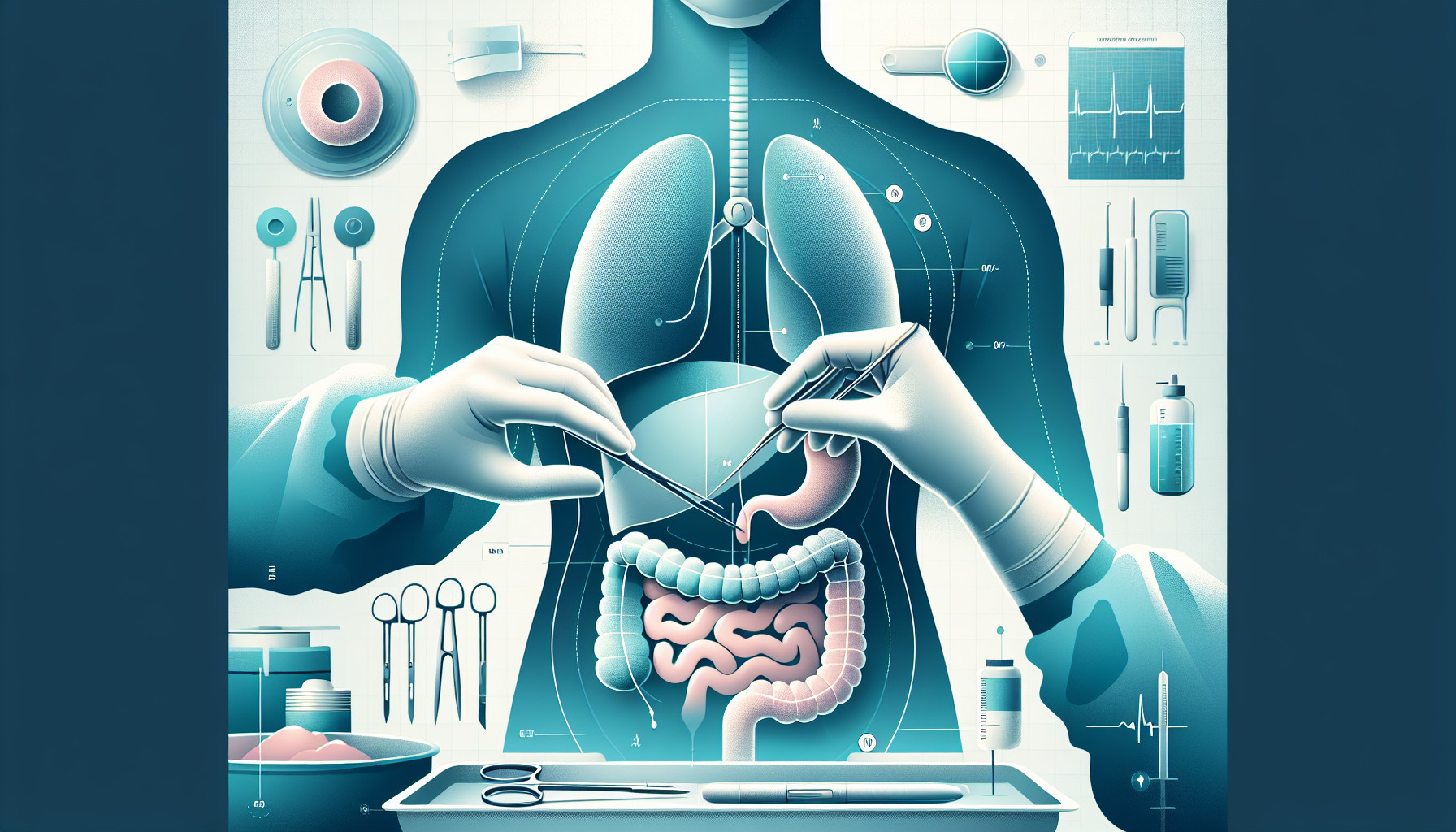Our Summary
This research paper talks about a method of repairing a type of hernia (a condition where an organ pushes through an opening in the muscle or tissue that holds it in place) known as hiatal hernia. The method is called Laparoendoscopic Hiatal Hernia Repair (LEHHR) and it involves a laparoscopic procedure (a type of surgery that uses smaller cuts than traditional surgery) and a transoral incisionless fundoplication (a procedure that uses a device to fold and stitch the stomach to reduce reflux).
The case study highlighted is of a 56-year-old woman who had symptoms of gastroesophageal reflux disease (a chronic disease where stomach acid frequently flows back into the tube connecting your mouth and stomach) for 40 years. She had a 2 cm hiatal hernia and underwent LEHHR 33 months ago. After the surgery, it was found that there were only minimal adhesions to the liver and the partial fundoplication (a surgical technique that strengthens the barrier to acid reflux) was intact. The angle of His (the angle at which the esophagus enters the stomach) was preserved which is a key anatomical benefit.
The paper details 10 main benefits of LEHHR, including the anatomical benefits from preserving the angle of His, and functional benefits such as normalizing pH values (reducing acidity). It also avoids certain complications like bleeding and is beneficial for any subsequent surgeries to address reflux issues. The lack of adhesions and easy access to the base of left crus (part of the diaphragm) make revisional surgery straightforward.
FAQs
- What is Laparoendoscopic hiatal hernia repair (LEHHR)?
- What are the benefits of LEHHR for hiatal hernia repair?
- How does LEHHR aid in treating gastroesophageal reflux disease?
Doctor’s Tip
A helpful tip a doctor might tell a patient about hiatal hernia repair is to follow post-operative instructions carefully, including dietary and activity restrictions, to ensure proper healing and minimize the risk of complications. It is also important to attend follow-up appointments with your doctor to monitor your progress and address any concerns. Additionally, maintaining a healthy lifestyle, including a balanced diet and regular exercise, can help prevent the recurrence of hiatal hernia symptoms.
Suitable For
Patients who are typically recommended for hiatal hernia repair include those with symptoms of gastroesophageal reflux disease (GERD) that have not responded to conservative treatments, such as medications or lifestyle changes. Hiatal hernia repair may also be recommended for patients with complications of hiatal hernia, such as Barrett’s esophagus or severe esophagitis. Additionally, patients with large hiatal hernias or those with recurrent symptoms after previous repair may also be candidates for hiatal hernia repair.
Timeline
- Patient experiences symptoms of gastroesophageal reflux disease for 40 years
- Esophagogastroduodenoscopy (EGD) shows a 2 cm hiatal hernia and DeMeester score of 21.3
- Patient undergoes laparoscopic hiatal hernia repair with transoral incisionless fundoplication (TIF) 33 months ago
- Patient undergoes laparoscopic cholecystectomy for symptomatic biliary dyskinesia, providing opportunity to examine operative anatomy
- Minimal adhesions to the liver are found, partial fundoplication is intact, angle of His is preserved, and fundus is spared from adhesions
- Anatomical benefits of LEHHR include preservation of angle of His, functional benefits include normalization of pH values, and strategic benefits include ease of subsequent revisional reflux surgery
- Revisional surgery is straightforward due to lack of adhesions, easy access to base of left crus, and sparing of fundus
What to Ask Your Doctor
What are the risks and benefits of undergoing laparoendoscopic hiatal hernia repair (LEHHR) with transoral incisionless fundoplication (TIF)?
How long is the recovery period after undergoing LEHHR with TIF?
What dietary and lifestyle changes should I make after the surgery to ensure successful outcomes?
Will I still need to take medication for gastroesophageal reflux disease (GERD) after the surgery?
What are the chances of the hiatal hernia recurring after undergoing LEHHR with TIF?
Are there any alternative treatment options for hiatal hernia that I should consider?
How experienced are you in performing LEHHR with TIF procedures?
What is the expected success rate of LEHHR with TIF for patients with similar conditions to mine?
Will I need any follow-up appointments or tests after the surgery?
Are there any specific complications or side effects that I should be aware of before undergoing LEHHR with TIF?
Reference
Authors: Fanous M. Journal: Am Surg. 2020 Jul;86(7):796-798. doi: 10.1177/0003134820933608. Epub 2020 Jul 1. PMID: 32683923
